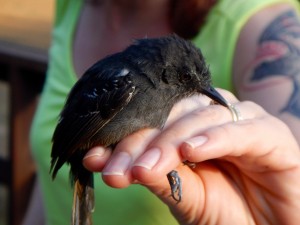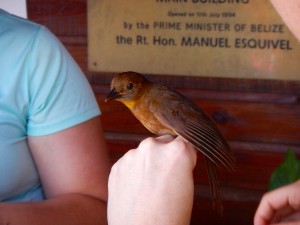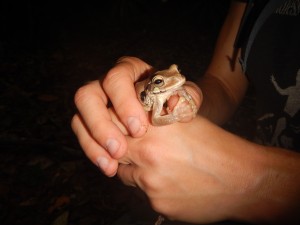The people from the other school caught two birds in the morning. One was a Slaty Antwren and the other was possibly a Red Throated Ant-Tanager. Both were very pretty birds.
After breakfast we went out and collected our camera traps. We did the whole 13 mile hike again, and like Scott and Adrienne promised, the second time around was much easier. After lectures, we opened up our camera traps and looked at the images they captured. In the beginning, everyone was super hopeful. There was a small bird that appeared on two close locations. And a Great Curassow on another. Other than that we just caught a lot of pictures of the other group that is here. People. Some more people. We were becoming less and less optimistic. But alas, on one of the last few traps we managed to get a picture of Tapir, which is extremely rare and endangered. Scott seemed really happy. On the last trap, which was mine, there were pictures of an Agouti and an Ocelot. That was really awesome. Scott confessed that he didn’t think the spot I picked was going to yield any good pictures. So i was pretty happy to prove him wrong.
Almost forgot. On the way to collect the traps we actually caught a glimpse of a Great Curassow on the Monkey Tail Trail. it was a lot bigger than I was expecting. All in all, pretty awesome day. Saw some cool birds, got an elusive cat picture. And of course, we got a picture of an endangered animal. How great is that?!
–Randy




